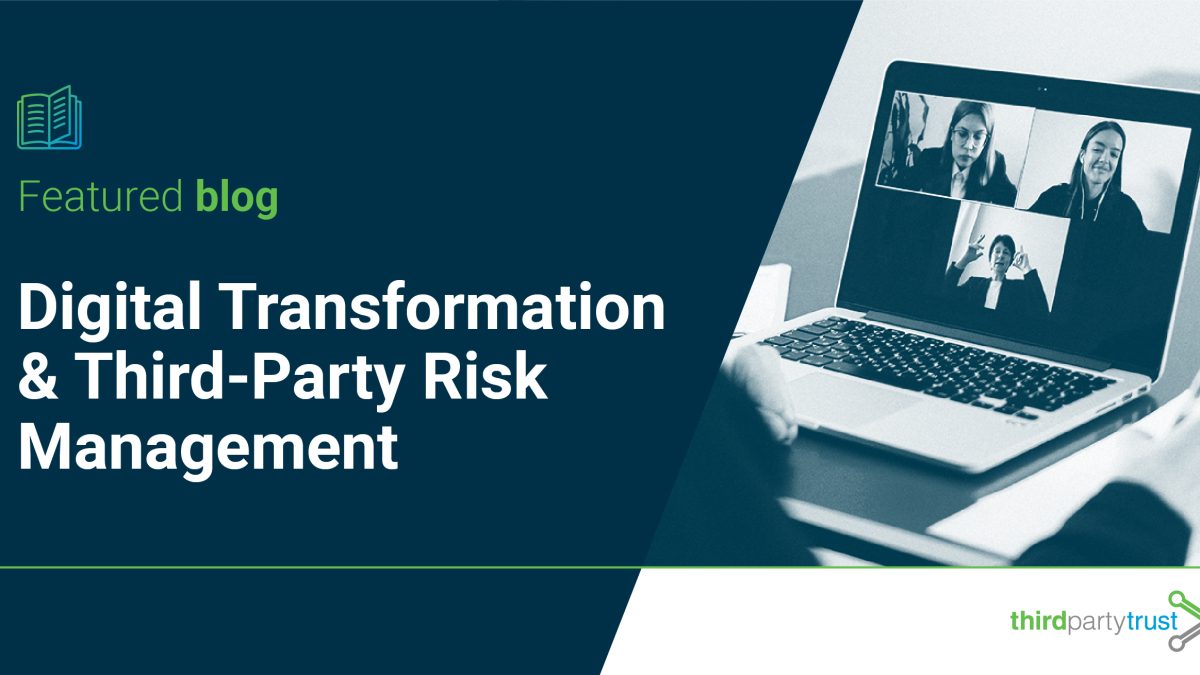Digital Transformation & Third-Party Risk Management, Closer than Ever
Digital transformation has been a buzzword for the last couple of years, and yet it has never seemed so real. According to Gartner, 69% of Boards of Directors accelerated their digital business initiatives following COVID-19 disruption last year. So how does this impact third-party risk management (TPRM)?
Let’s first refresh the concept of digital transformation: The adoption of digital technology to transform services or businesses, through replacing manual processes with digital processes or replacing older technology with newer technology. This enables increased efficiency via automation, new types of innovation and creativity.
The pandemic forced organizations to undergo rapid transformations in their operation, including the adoption of technology solutions. Cloud-based applications, personal devices, and remote working have become the rule rather than the exception in a matter of months. Now, as we walk the long road to recovery, we can start to think beyond the short-term risks.
“Technology-driven digital transformation can, and should be, a strong enabler in addressing employee, customer, supply chain and broadband impact to position the enterprise to come out of the crisis stronger”
Partha Iyengar, Distinguished Research Vice President at Gartner
Budgetary Changes and Their Impact on TPRM
The study showed that the majority of Boards (67%) expect budgetary increases in technology as a result of the pandemic, while functional areas such as marketing and HR are expected to experience budgetary cuts.
This might be good news for TPRM teams, which will need to adapt their programs and probably speed up their own digital transformation initiatives. Manual assessments, spreadsheet-based questionnaires, and email follow up are a no-go under the new circumstances.
Additionally, pentests, audits and some manual governance, risk and compliance (GRC) processes once conducted in person now need to be transformed into digital ones.
How TPRM Technology Can Help
Dedicated technology is the only way to remain safe and compliant in the new normal. For TPRM teams, having a platform that can automate and streamline key processes is now essential. Risk assessments, vendor scoring, reporting and other activities across the program lifecycle need to be readily available and accessible for everyone, no matter what their geographical location is.
The fact that these solutions are cloud-based offers many benefits over their on-premises equivalents. For example, they can reduce costs due to not having much hardware requirements. Plus they’re easy to scale up as people return to work.
Much of what was used as “quick fixes” worked well, raising the bar for what people expect as users of technology.
Is third-party risk actually increasing?
Digital transformation has significantly increased reliance on third-parties as everything moves to the cloud. This will bring more complexity to TPRM programs and change an organization’s risk profile. For example, an emerging risk area that has developed as a result of the pandemic is the risk posed by remote-working employees of a company and those of its third-parties.
However, that doesn’t mean it will become harder to keep track of everything. Once again, the right technology is the key to a streamlined process that can scale as the vendor ecosystem grows. Conversely, companies that are a vendor or third-party to another company can use technology to scale their security response process when answering due diligence requests, thus speeding up the sales cycle.
A robust TPRM program is now a key component of the success of both the organization’s response to COVID-19, and its own digital transformation journey. If your team needs help explaining this to the Board or senior management, here go some tips to obtain C-level buy-in – as told by a CISO.
To learn more about how ThirdPartyTrust can help you automate your third-party risk assessment and monitoring process, request your free trial now:




